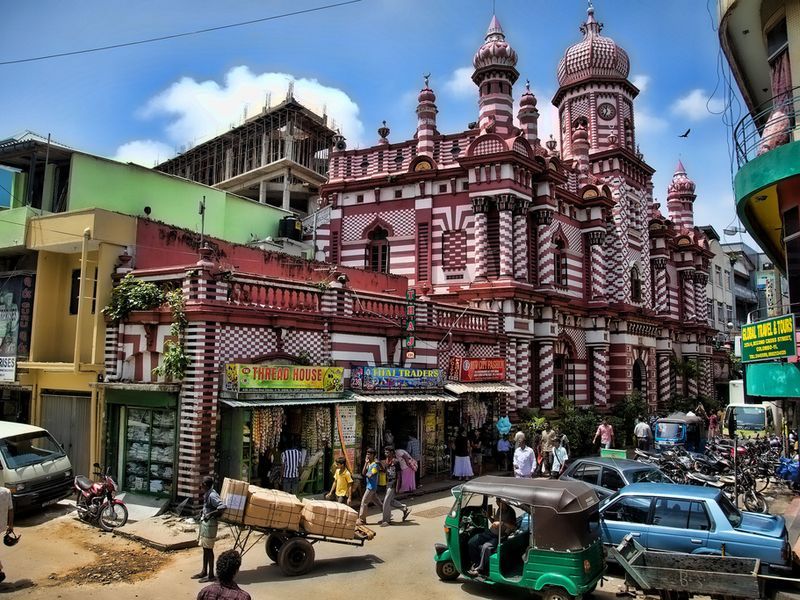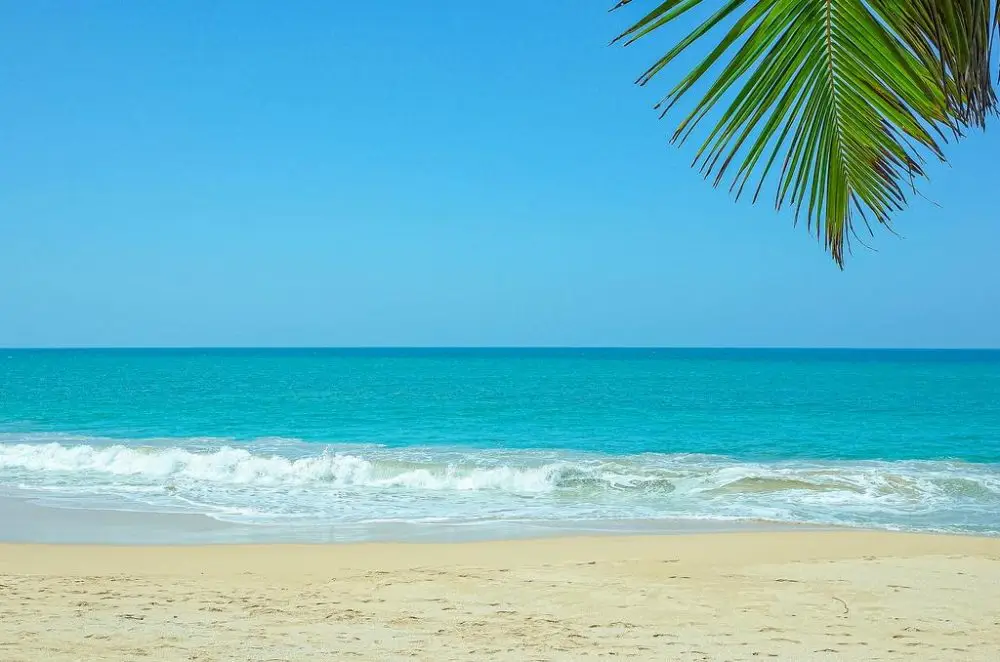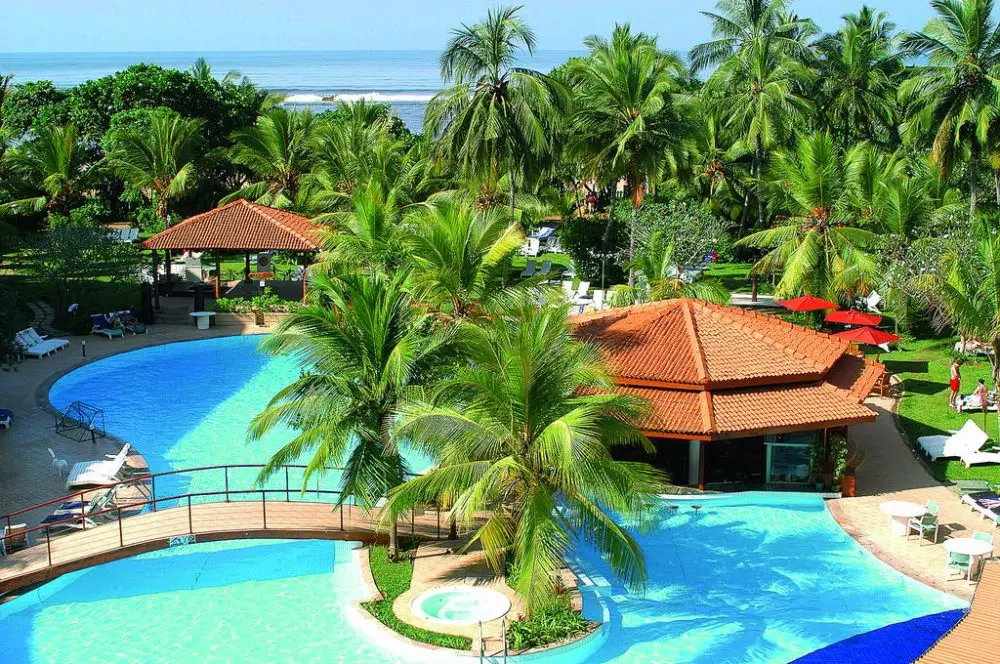A tropical metropolis with a colonial past, a business capital and a cultural centre at the same time. The peculiarities of the Colombo resort in Sri Lanka make it exceptional even among the exotic destinations of Southeast Asia. The city combines Buddhist traditions, European architecture and oriental flavour. Modern skyscrapers neighbour ancient temples, and on the streets you can find both luxury cars and traditional tuk-tuks.

Colombo is a city with a rich past and an international atmosphere
The first mention of Colombo dates back to the 2nd century, when the port was used for the spice trade. Later it attracted the attention of the Portuguese, then the Dutch, and in the 19th century the British made it the administrative centre of the island. The legacy of the colonial era is evident in the city’s architecture: old forts, Catholic cathedrals, and Victorian-style buildings are juxtaposed with Hindu temples and mosques.
Modern Colombo in Sri Lanka retains its status as the economic centre of the country. Banks, government offices and business districts are located here, creating a contrast with the traditional markets and cosy streets of the historic part of the city.
Attractions in Colombo: what to see in the city, features
 Travellers looking to explore the features of the Colombo resort in Sri Lanka will find many interesting places to visit.
Travellers looking to explore the features of the Colombo resort in Sri Lanka will find many interesting places to visit.
Top 5 places to visit:
- Gangaramaya is the oldest Buddhist temple that combines elements of traditional Lankan, Thai and Chinese architecture. The temple complex houses an impressive collection of artefacts, including ancient Buddha statues, rare manuscripts and even vintage cars. Religious festivals and festivals are held here, attracting pilgrims from all over the country.
- The Dutch Hospital is the oldest building, built by the Dutch in the 17th century. Formerly a hospital for soldiers, it is now a lively entertainment centre with shops, restaurants and cosy cafes. Colonial architecture is combined with modern infill to create a unique atmosphere.
- Galle Face Green is a spacious promenade where locals and tourists gather for evening walks, picnics and sunset watching. A place to sample street food, enjoy the sea breeze and watch traditional dances and performances by street performers.
- Pettah Market is the city’s oldest market, known for its chaotic and surprisingly colourful order. The narrow streets are filled with stalls selling exotic fruits, spices, textiles and souvenirs. Here you can immerse yourself in the real atmosphere of an oriental bazaar, taste national specialities and buy local handicrafts.
- Lotus Tower is the tallest tower in South Asia, rising 350 metres. It is the main symbol of modern Colombo and includes an observation deck offering stunning views of the city and coastline. The tower also serves as a telecommunications centre and an important tourist attraction.
Where to stay: Colombo hotels for every budget
Colombo’s hotel stock offers options to suit all tastes and wallets. Luxury five-star hotels overlooking the ocean, stylish boutique hotels with author’s design, budget hostels for travellers – the choice is huge.
Popular Colombo Hotels:
- The Cinnamon Grand is one of the city’s most prestigious hotels with gourmet restaurants, a swimming pool and spa complex.
- Shangri-La Colombo is a modern option in the business centre, offering panoramic ocean views and first-class service.
- Paradise Road Tintagel is a boutique hotel in the former Prime Minister’s residence, ideal for a secluded holiday.
- Colombo Courtyard is a stylish eco-hotel with a cosy courtyard, swimming pool and author’s interior.
- CityRest Fort is a hostel in the centre offering comfortable accommodation at an affordable price.
The peculiarities of the Colombo resort in Sri Lanka are also evident in the hotel service: friendly staff, services adapted to tourists, traditional elements of decor. Many hotels offer transfers from the local airport, excursions and national cuisine, immersing guests in the local culture from the first days of their stay.
Transport in Colombo: How to get around the city
The city has a well-developed transport network, which makes travelling convenient. However, traffic jams often occur during peak hours. Transport options include:
- Tuk-tuks are the most common mode of transport. It is important to negotiate a price or choose an official service before travelling;
- taxis are a convenient but expensive way of travelling, especially for tourists;
- Buses are the most budget-friendly option, but the routes are difficult for those unfamiliar with the local area. For long journeys it is convenient to use the railway service.
Colombo Airport is located 35 km from the city centre. It can be reached by taxi or a special shuttle.
Colombo: holidays and climatic features
The climate is tropical, with warm temperatures all year round. The best time to visit is from December to March, when there is minimal chance of rainfall. The summer months bring rains, but this does not stop you from enjoying the local attractions.
The high season is the winter months when holidays in Colombo become comfortable. Features of the resort include beaches, city life and gastronomy, combining active holidays with relaxation.

Conclusion
 The features of Colombo resort in Sri Lanka make it one of Asia’s most versatile destinations. History, culture, modern amenities and natural beauty make it a special place. Travellers are attracted by the harmony between active city life and the tranquility of a tropical island.
The features of Colombo resort in Sri Lanka make it one of Asia’s most versatile destinations. History, culture, modern amenities and natural beauty make it a special place. Travellers are attracted by the harmony between active city life and the tranquility of a tropical island.
 en
en  ru
ru  de
de  nl
nl  ar
ar  es
es  fr
fr  hi
hi  it
it  pt
pt  el
el 











